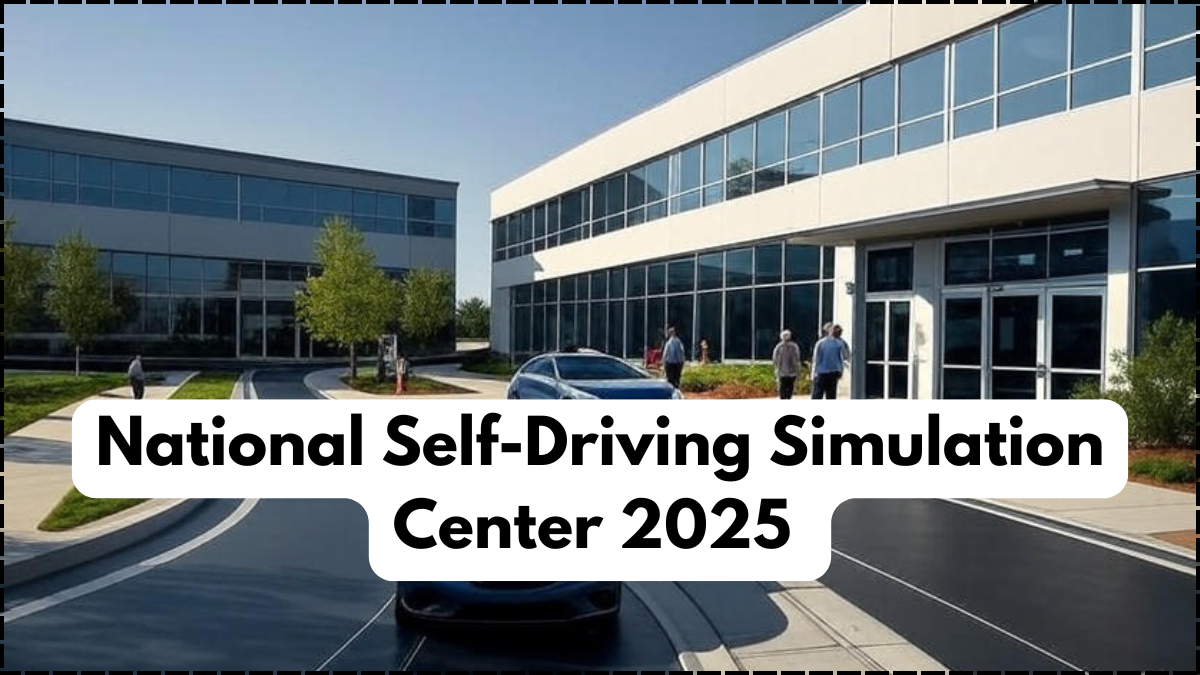The future of mobility is here, and India is making bold strides with the launch of the Self-Driving Simulation Center 2025. This facility, designed to provide autonomous car training, is set to revolutionize the way vehicles are tested, improved, and launched for public use. By offering realistic virtual environments, advanced analytics, and hands-on learning, the center ensures that the next generation of self-driving cars meets global safety standards.

Why the Self-Driving Simulation Center Matters
The rise of autonomous cars brings both opportunity and responsibility. Testing such vehicles on public roads can be risky and limited, which is why simulation is essential. The Self-Driving Simulation Center bridges this gap by replicating real-world driving conditions in a controlled digital environment.
Key benefits of this initiative include:
- Safe autonomous car training without endangering lives
- Reducing costs of on-road trials
- Faster improvement cycles for new technologies
- Detailed tracking of driverless vehicle behavior in complex scenarios
This approach ensures that India remains a leader in adopting innovative and safe transport solutions.
Features of the Self-Driving Simulation Center
The Self-Driving Simulation Center 2025 is designed with world-class features that allow automakers, researchers, and students to test driverless cars comprehensively. Some of the highlights include:
| Feature | Purpose | Impact |
|---|---|---|
| Virtual Reality Tracks | Simulates city, highway, and rural roads | Allows complete autonomous car training without real traffic |
| AI-Powered Analytics | Monitors decision-making of cars | Identifies errors before real-world testing |
| Weather Simulators | Recreates fog, rain, and snow | Tests cars in extreme conditions |
| Emergency Scenarios | Includes sudden obstacles or pedestrian crossings | Prepares vehicles for real-life challenges |
| Learning Modules | For engineers and students | Builds skills in AI, robotics, and automotive design |
This state-of-the-art infrastructure helps make the transition to fully autonomous cars smoother and safer.
Role in Autonomous Car Training
For a technology as complex as driverless cars, autonomous car training is not just about programming—it’s about preparing vehicles to understand unpredictable human and environmental behavior. The center provides scenarios like sudden lane changes, pedestrian crossings, and multi-vehicle collisions to train AI systems to respond appropriately.
Engineers can analyze how the car makes decisions, fine-tune responses, and ensure compliance with traffic rules. By combining theory with practical simulation, the center offers a new educational pathway for future automotive professionals.
National and Global Impact
The establishment of the Self-Driving Simulation Center 2025 strengthens India’s position in global automotive innovation. Domestic carmakers will be able to launch safe and reliable autonomous cars, while international companies may collaborate with the facility for large-scale trials.
Additionally, universities and technical institutes can integrate autonomous car training into their curriculum, creating a skilled workforce ready for tomorrow’s mobility challenges. On a broader scale, the center contributes to global safety by reducing accidents, improving road discipline, and accelerating the adoption of sustainable transport.
Conclusion
The Self-Driving Simulation Center 2025 represents a crucial step in preparing India for the driverless future. With its focus on autonomous car training, it provides a safe, cost-effective, and advanced environment to test vehicles before they hit the road. By combining cutting-edge technology with practical applications, this initiative not only ensures road safety but also builds a skilled workforce and inspires innovation. The center is not just a testing ground—it’s the foundation for a smarter, safer tomorrow.
FAQs
What is the Self-Driving Simulation Center 2025?
It is a national facility that provides simulated environments for testing and training autonomous cars before real-world deployment.
How does autonomous car training benefit from simulation?
Simulation allows driverless cars to be tested in thousands of scenarios safely, reducing risks and improving decision-making systems.
Who can use the Self-Driving Simulation Center?
Automakers, researchers, government agencies, and students in fields like AI, robotics, and automotive engineering can access the facility.
Will the center also support international collaborations?
Yes, global companies are expected to partner with the center for large-scale autonomous vehicle testing and research.
How does this center impact road safety?
By training vehicles in complex and emergency scenarios, the center reduces the risks of accidents once cars are deployed on public roads.
Click here to learn more